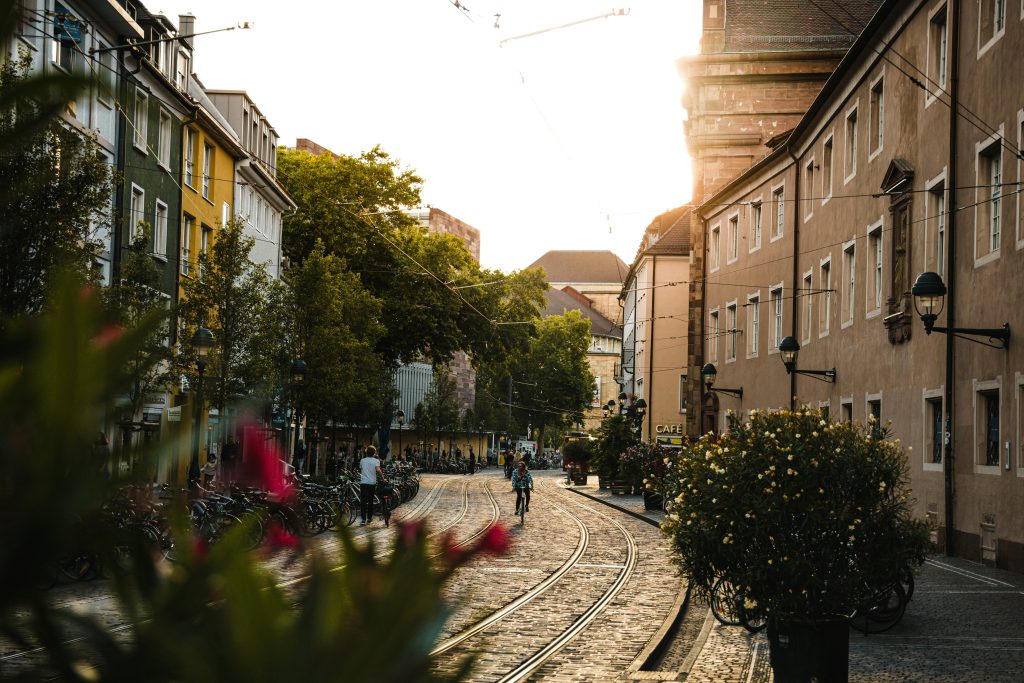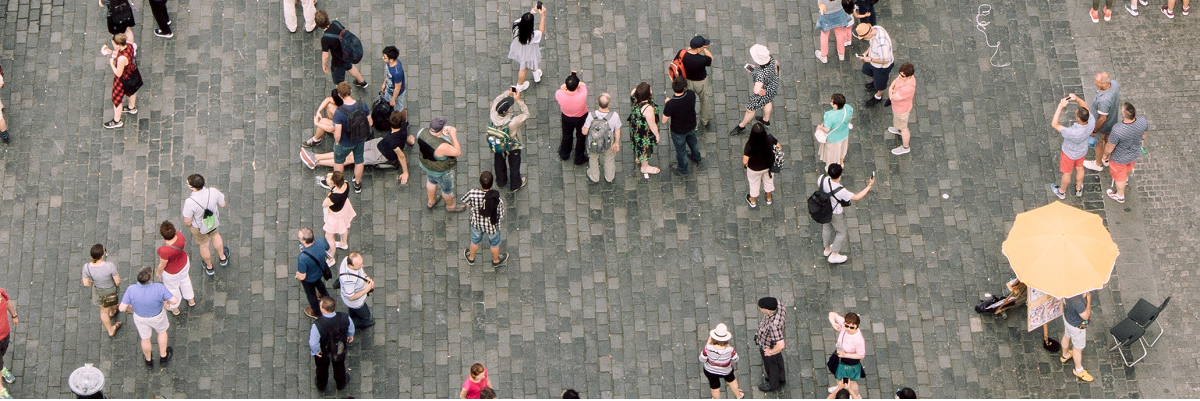Mark J Nieuwenhuijsen PhD, is Research Professor in Environmental Epidemiology at ISGlobal in Barcelona. He works on the topic of health in cities and has published fascinating papers on liveable, healthy cities and new urban models that include cleaner transportation and a different approach to human health. In an interview, he kindly shared his perspectives with me:
Hello Mark. Let’s start by me asking what health in cities means to you?
My particular interest is in the determinants of health in cities focusing on urban and transport planning. So I’m looking at how current urban and transport planning kind of practices affect health. The main indicators that we look at for this are air pollution, green space, noise, heat island effects, and physical activity. (You can check these indicators for your city here – this is part of Mark’s EU research project on 1,000 European cities).
We know that many cities are worried about air pollution or the lack of green space, and they want to develop policies, but sometimes that can be quite hard because people say “It’s only air pollution”. As researchers, we set out to show health estimates related to the level of air pollution. For example, we can demonstrate how the mortality burden is linked to air pollution. This makes it easier for policymakers to convince others of the importance. It’s much harder to argue against measures that improve health than it is to argue against measures that improve air quality.
What are the biggest health challenges in cities after COVID?
From my perspective, the biggest challenge is air pollution. We know that the levels are too high and cities are really hotspots. Looking at our 1,000 cities, we estimated that there are 200,000 premature deaths each year as a result of high air pollution levels. Hopefully, the EU will sign the new ambient air quality directive later this month.
Another challenge is the lack of green space. Nearly 43,000 premature deaths in the 1,000 cities we looked at are connected to the lack of green space. Often, there may be green spaces in a city, but they are around the outskirts. We know that green space is very important for people’s health.
I also think that noise is a big challenge. We estimated that 60 million people in the 1,000 European cities we looked at are annoyed because of the noise levels in their cities. They can also be harmful.
And then we see more and more the challenges coming with the urban heat island effect, particularly in Eastern and Southern European cities. They lead to premature mortality, but also to poor mental health. I think we need to work on that much more. The numbers of people that die as a result of urban heat islands are still relatively small, but they are considerable.
Lastly, we also need to look at physical activity. This is a problem not only in cities, but also in rural areas. A lot of people don’t get enough physical activity in their daily lives to have a healthy life. We need to build active mobility into their life, like cycling or walking, to move more.

What are some of your favourite solutions to make a city healthier?
One of the more innovative urban models is found here in Barcelona with the superblocks. The idea is to pacify certain streets and make them greener while banning traffic. I think that this could be implemented in many other cities.
Another approach consists of low-traffic neighbourhoods that have been implemented in London in particular. We can already see many benefits, such as fewer cars, lower air pollution levels, and not a lot of increase in traffic in the nearby neighbourhoods, which is also important.
Then there is the 15-minute city, a very interesting concept by Carlos Moreno where everyone should live within 15 minutes of their destination like schools, workplaces, shops. It’s being implemented successfully in Paris and I think it is very promising.
Other approaches include car-free neighbourhoods like Vauban in Freiburg – a much better place to live with quiet roads and sustainable housing, but unfortunately also quite expensive -, 30-kilometre speed limits in cities, low-emission zones, and infrastructure investments in active transportation. The car takes up a lot of space on the roads of our cities and I think what we should be investing in is cycling networks to get people to cycle.
Finally, greening the city is important as well. Many cities all over the world are planting more trees and green spaces. I like the 3- 30 – 300 green space rule. This is the idea that everyone should be able to see three trees from their window, live in an area with 30 percent of green space, and live within 300 metres of a green space of one hectare.
How has the pandemic influenced urban planning and transport planning?
I think that health has become more important as an indicator. Before the pandemic, too often urban and transport planning didn’t take health into account. Now we see health creeping up on the agenda for urban planning. There are still too many silos and sectors that don’t talk to each other, although they should come up with a more holistic approach to find solutions.
For example, only talking about green spaces or only talking about housing means that we are yet again siloing things. Of course, everyone should have green and affordable spaces, but one shouldn’t exclude the other one. You need a holistic perspective. I think that often, the most beautiful buildings get built, but there is no green space around them – even if it was there in the plans. This can result in very barren neighbourhood with beautiful buildings.
Usually, wealthier neighbourhoods have the most green or the most access to green spaces. Do you have any recommendations on how we can work on inequalities in this regard?
We know that there is about ten years difference in life expectancy between poorer neighbourhoods and richer neighbourhoods. We also know that people value green spaces a lot. The recommendation is to put more green in poorer neighbourhoods. This way, we see many more benefits than putting it in richer neighbourhoods, since the rich already have enough money to improve their health.
Now the problem, of course, is that green space usually makes a neighbourhood more attractive, which leads to gentrification. Ideally, we would have more mixed neighbourhoods both in terms of people that are living there and also in terms of destinations and facilities. You also need to put in place policies to prevent gentrification from happening. Green is one aspect of including health into urban planning, but you also have to think about cultural centres and improved housing.

Have you seen any interesting approaches to funding interventions for the healthy city?
The funds that came because of COVID were used to some extent to fund things like the superblocks and cycling lanes, for example in Spain. And the EU’s next generation funds work on these topics.
But often, cities don’t have a lot of income to spend and making changes towards a healthier city is quite expensive. And city councils have to pay for these things, but they don’t reap the benefits from having a healthier population, because these happen more on a state level when you look at expenses for hospitals or healthcare.
Which cities are doing well in terms of healthy urban planning?
I think the most important thing is trying to improve the overall economy and social economic status of cities. From an urban and transport planning perspective, I would mention cities like Utrecht in the Netherlands, where they have changed from a more car-dominated city to one where about 80% of trips now happen by bike. Paris is a larger city that has been doing quite well in terms of getting people to cycle.
And here in Barcelona, we had a mayor that was quite pro moving people around and centring planning on mobility, which is why we got the superblocks. But that also shows how important political leadership is, because now with a new mayor, superblocks are receiving little to no attention in Barcelona. That’s such a shame, because we know that they can drastically reduce air pollution.
My last question is a bit more personal and for readers who might not necessarily be urban or transport planners themselves: What is your recommendation to people for being healthier in cities on a daily level?
First of all, I would say leave the car at home and use public transport, cycle or walk. Build this kind of active mobility into your daily routine because most of us don’t get enough physical activity.
Secondly, visit green spaces that are near you. They are very good for your mental health in particular. Go for a long walk or a green space to start with, rather immediately going to the doctor if you feel your mental health declining.
And then I would also recommend talking to other people in your neighbourhood. Discuss how you would like to see it, how it can be improved, and then organise yourself and go to the mayor and talk to them. Community building is key. After all, we all want a nice neighbourhood where people can come together, walk around, and see each other.
Read more about how to integrate human health into urban and transport planning in Mark’s book.










